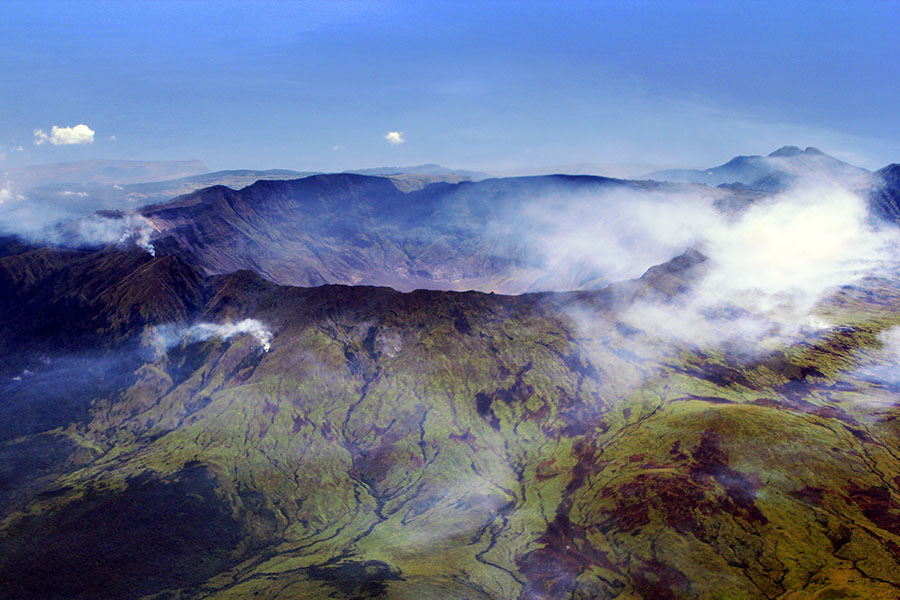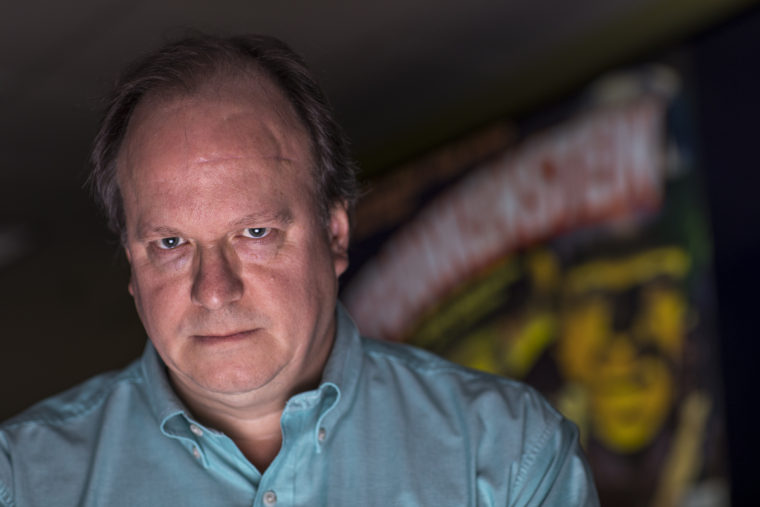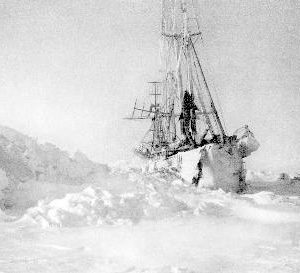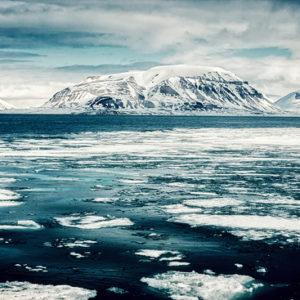Next year marks the 200th anniversary of the classic novel Frankenstein; or, The Modern Prometheus by Mary Shelley, which first gave life to “the monster,” now an icon in his own right. The story can perhaps credit some of its long-lived popularity to the fact that it intersects with many fields of study: literature, biology, ethics, sociology, media studies and … earth science?
“I’ve always been a fan of the book,” admits Michael Wysession, a professor of earth and planetary sciences in Arts & Sciences at Washington University in St. Louis. He read Frankenstein for the first time in middle school. “I was really into the whole genre. It was a big part of my adolescence.”
When WashU began to consider the many ties the book has across the university in order to celebrate the novel’s anniversary, Wysession was quick to point out the influences and parallels with his field, including how the book came to be, its setting and how Shelley’s ideas dovetail with the larger issue of climate change today. (Just a warning — there are some spoilers ahead for those unfamiliar with the novel.)
If you like Frankenstein, thank a volcano
We likely have earth sciences — and more specifically Mount Tambora — to thank for the novel’s creation at all. In 1816, the year the book was written, 18-year-old Mary Godwin had a bit of a reputation. She had an affair and a child out of wedlock with a married man (later her husband Percy Shelley). That summer, she and Shelley went on vacation with Lord Byron and writer-physician John Polidori to Geneva, but the weather was terrible. Gloomy, dark, rainy and cold, the group of writers decided to have a competition to see who could write the best horror story. Mary wrote Frankenstein. So how does this involve a volcano?
The eruption of Mount Tambora in Indonesia in 1815 was the largest volcano eruption in the last several centuries. “There were a lot of sulfate aerosol particulates ejected into the atmosphere, and this blocks out some sunlight and causes temperatures to drop,” Wysession says. “We didn’t have satellites and computer technology at that time, so we couldn’t quantify it. But with smaller volcanic eruptions, such as Mount Pinatubo in 1991, we saw the global temperatures drop more than a degree over the next year, even in spite of the El Niño at that time, which normally drives temperatures upward.

“The following year, 1816, was known as ‘The Year Without Summer,’” Wysession continues. “The climate in the eastern United States was just devastating. Crops failed, the winter rains were freezing, it snowed in the summer; there was mass starvation. Whole towns in New England actually decided to pack up and leave, causing a mass exodus south and westward.” Though the Louisiana Purchase was made in 1803, it wasn’t until this time that the first large migration began. So this volcano in Indonesia played an important role in the settling of the United States.
But back to Mary Shelley. “Europe was also devastated. Temperatures were several degrees colder on average. It was cold, bleak and rainy, and there was massive flooding,” Wysession says. In fact, the flooding inspired many European governments to found their first national scientific organizations to study meteorology in order to better predict such floods in the future. “It was a dismal time, and I think that led to a feeling of gloom and pessimism that year throughout Europe, which was particularly hard hit. It was the perfect atmosphere for dreaming up Frankenstein.”
Exploring the Arctic
Modern-day earth scientists study the Arctic to learn about our planet’s changing climate. For different reasons, people in the 17th and 18th century were fascinated with the Poles. Many hoped to find a northwest passage for commercial reasons, but for most, it was the mystery. “It was this frontier,” Wysession says, “and there weren’t many frontiers left. People had no idea what was up there. At the time of Mary Shelley’s writing, there were still people — learned people — who thought there was this tropical land at the North Pole with sunny sands and palm trees, and if you could only get across the ice, you would find this paradise.
“It was also a disastrous place where repeated expeditions dramatically failed: ships stuck in the ice for months or years, crushed by the ice, and many explorers simply never returned,” he says. “It was this terrible but very attractive place, so huge numbers of fictional stories at the time involved the North Pole.” Several Edgar Allen Poe stories take place at the Poles, and even Dracula featured a ship coming back from the Arctic with no one left alive.
This cultural fascination also plays out in Frankenstein. The Arctic provides the bookends of the novel. Captain Robert Walton, a sea captain, who has set out for the North Pole for fame and fortune, rescues the nearly frozen Victor Frankenstein from the icy landscape. When Frankenstein learns of the captain’s mission, the scientist recounts his life’s tale and the misery his creation of the monster has caused. After providing this warning, Frankenstein dies, and the monster boards the ship to mourn his passing. Famously, the monster then drifts out to sea on an ice raft, never to be seen again.
The danger of Arctic travel surely provided inspiration to Shelley and her contemporaries, but stories like Frankenstein also reveal a fascination with the act of discovering new knowledge. People then were as fascinated by science as we are now. Remember Jules Verne’s Journey to the Center of the Earth? It sounds crazy to us now, but Wysession says there were serious scientific theories at the time that predicted the Earth was hollow. “There was a well-developed hollow earth theory, and Jules Verne tapped into that,” Wysession says, “just as Mary Shelley was inspired by Luigi Galvani doing experiments with dead frogs, connecting electrodes to them, putting in electric charge and watching the frogs twitch.”
Ironically, Wysession says, Frankenstein could never be framed the same way today because the ice is gone. “The Northwest Passage has opened up. Global warming has melted the ice, and what all these explorers were trying to achieve for centuries has now inadvertently occurred. So the very premise of the story couldn’t even happen anymore. I was just up in the Arctic Circle last summer, lecturing on a National Geographic expedition, and there was very little ice. That whole region has changed dramatically.”
We are Victor Frankenstein
Though Mary Shelley didn’t predict climate change in Frankenstein, Wysession sees similarities between the actions of the eponymous scientist and our excessive production of greenhouse gasses.
Wysession, though, is the first to admit that climate change is complex. “There are many factors, no doubt about it, but I think every climate scientist now — even those that work for the petroleum industry — know that humans are contributing to global warming. We have enormous amounts of data, both current and historical. We know how greenhouse gases work. We know that the existing level of carbon dioxide causes our planet’s surface to be 30 to 35 degrees warmer than it would otherwise have been. There are very strong correlations between carbon dioxide levels and temperature over centuries, millennia, tens of thousands of years, hundreds of thousands of years, millions of years, hundreds of millions of years and even billions of years. The data are unequivocal on this.”
According to earth scientists, the planet should have been sliding into the next ice age right now, but instead, temperatures are higher than ever. “The way our climate mode has worked for the last million years or so is that we’ve had about 100,000 years of brutal, variable ice age followed by a brief, less than 10,000-year period of warmer, stable interglacial weather.” This pattern has obviously had a dramatic effect on humanity. Agrarian communities first started to develop 130,000 years ago, but then an ice age came again, and we returned to a hunter-gatherer way of living for another 100,000 years. When the climate warmed again 10,000 years ago, that’s when the roots of our civilization took hold.
“The forces that drive this ice age have nothing to do with anything on Earth,” Wysession says. “They’re called Milankovitch cycles, and they’re a function of the elliptical shape of Earth’s orbit, the tilt of Earth’s axis of rotation, and the angle at which that axis of rotation points. These fluctuations alter how much sunlight reaches Earth, and how much either gets reflected off of continents, which are largely in the Northern Hemisphere, or absorbed by the ocean, which is most of the Southern Hemisphere.
“Those cycles began to drive us back into the next ice age,” Wysession says, “and it had been getting progressively cooler for thousands of years. But in an amazingly short amount of time, we’ve not only kicked ourselves out of it, we’re now higher in temperature than the mean peak 7,500 years ago and still going up at an unprecedented rate. There is a good reason why most countries around the world are doing everything they can to take action toward this.”
“Climate change is the monster we made.”
— Michael Wysession
It’s difficult to pin any single weather event on climate change, but Wysession points out that the ocean was 13 inches higher when hurricane Sandy hit the east coast in 2012 than it was just 150 years prior. “One analogy I like, from climate scientist Michael Mann, is: ‘Look, if you take a basketball court and you raise the floor up by one foot, you’re going to get more slam dunks.’ And hurricane Harvey is another one of these slam dunks, and they’re going to keep happening with more regularity, and they’re going to cost these local regions hundreds of billions of dollars each time they occur. We have to start asking ourselves at this point: to what degree is the nation, the government, the rest of the country responsible?”
The data don’t just reveal climate change as the force behind the major storms lately; they point to humans. “The cause of global warming is obvious given what we know about greenhouse gases,” Wysession says. “When we pump 9 or 10 billion tons of carbon in the atmosphere each year, there isn’t a need to look for another cause.” A recent data visualization in Bloomberg illustrates this point nicely.
“We see it right there. The smoking gun is pointing us right in the face,” Wysession says. “Climate change is the monster we made. We are Victor Frankenstein.”
Next steps for Victor Frankenstein
“I try to maintain a positive outward face because from my experience working with kindergartners up through training teachers, if I just go through that litany of all the evils the humans are doing — and it’s a long list — people’s faces go blank very quickly,” Wysession says.
“For geologists, we’ve seen the past, we know what it holds, and we know it will happen again in the future,” he says. “A large volcano, meteor impact, or any one of a number of things can affect our climate in a dramatic way, and our infrastructure is already stretched to the limit. From a sustainability perspective, our planet can really only hold about half a billion humans long-term, and we’re at 7.4 billion right now. We’re a train wreck waiting to happen. But when talking to people, I do try to focus on the places where we’ve been able to enact change.”
That growing hole in the ozone layer above the arctic? We’ve been able to stop it. Remember when the U.S. had burning rivers and smog so dark the street lamps were on during the day? In the late 60s and early 70s, Congress passed legislation such as the Clean Air Act and the Clean Water Act to limit pollution. Even in China, where 1.6 million die every year from coal-exhaust–related lung diseases, they are now working on improving air quality.
“When things get bad enough, countries will make changes,” Wysession says. “There are aspects of climate change, however, that are not easily reversible, and that’s something that makes climate change unique. The ocean overturns over a period of thousands of years, so the heat that we’re pumping into the ocean now will continue to circulate and come up for thousands of years. Even if we were to stop what we’re doing right now and cease all burning of fossil fuels, our atmosphere will continue to warm for thousands of years.”
Despite the reality of the situation, Wysession tries to remain optimistic. “I hope there will be a lot of really good science fiction and horror stories that are written from the current climate changes,” he says. Hopefully, these literary descendants of Frankenstein can spark necessary responses. “The sooner that we can take action on this, the better it will be for the sake of future generations.”


